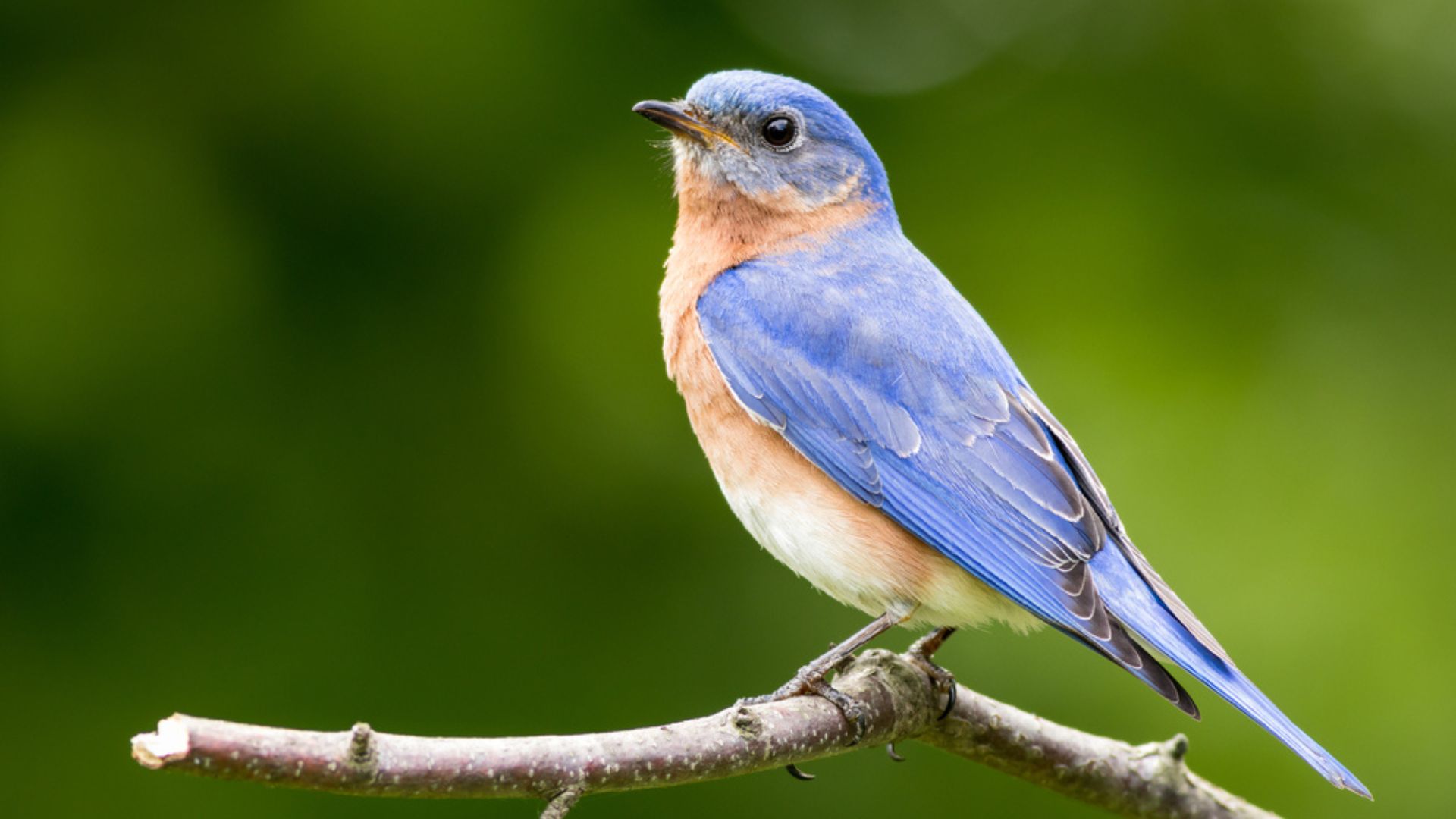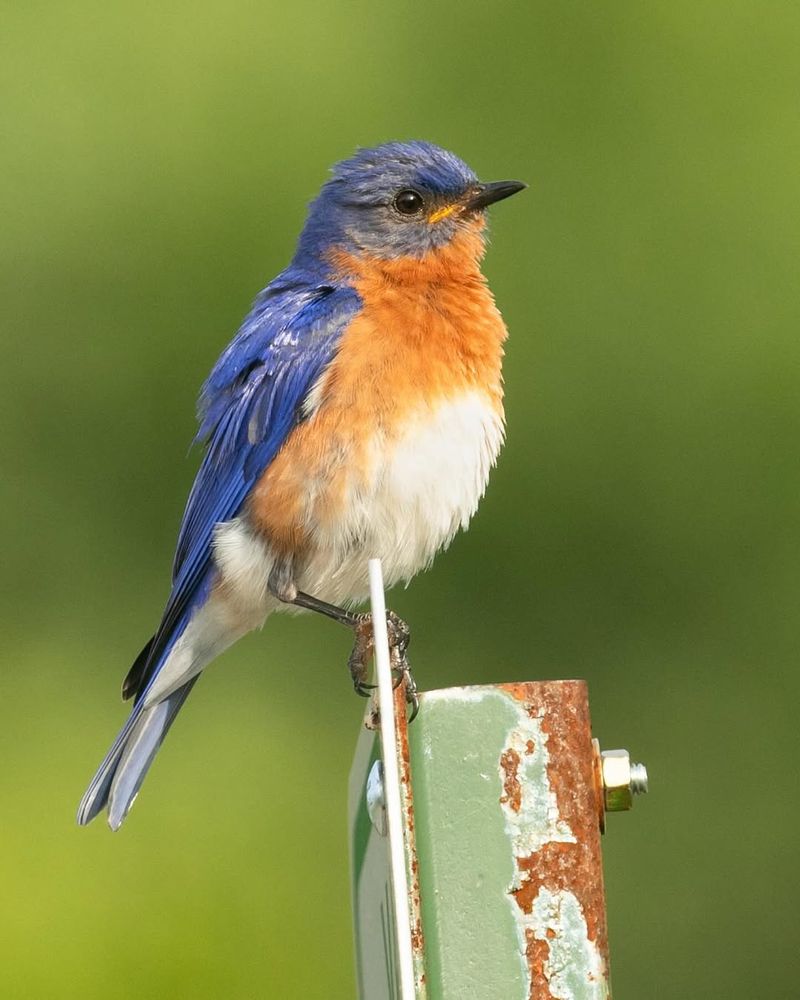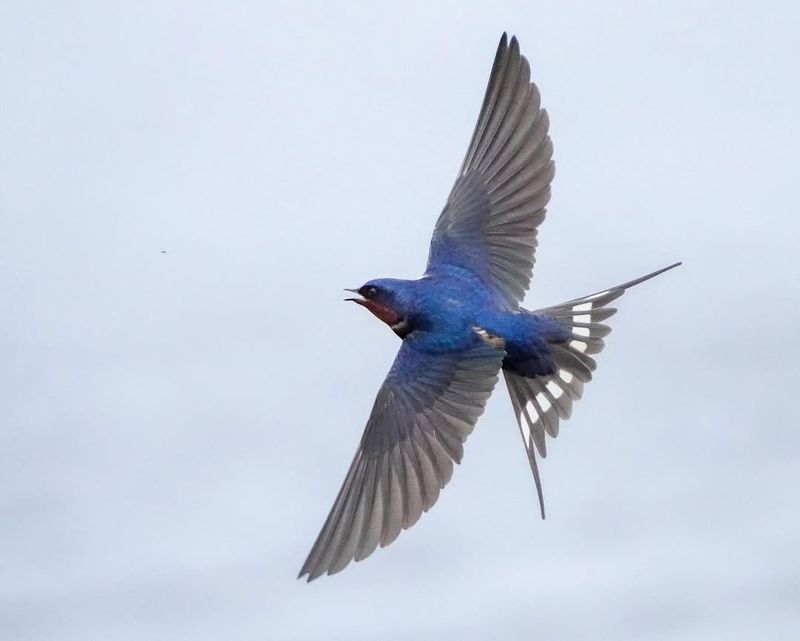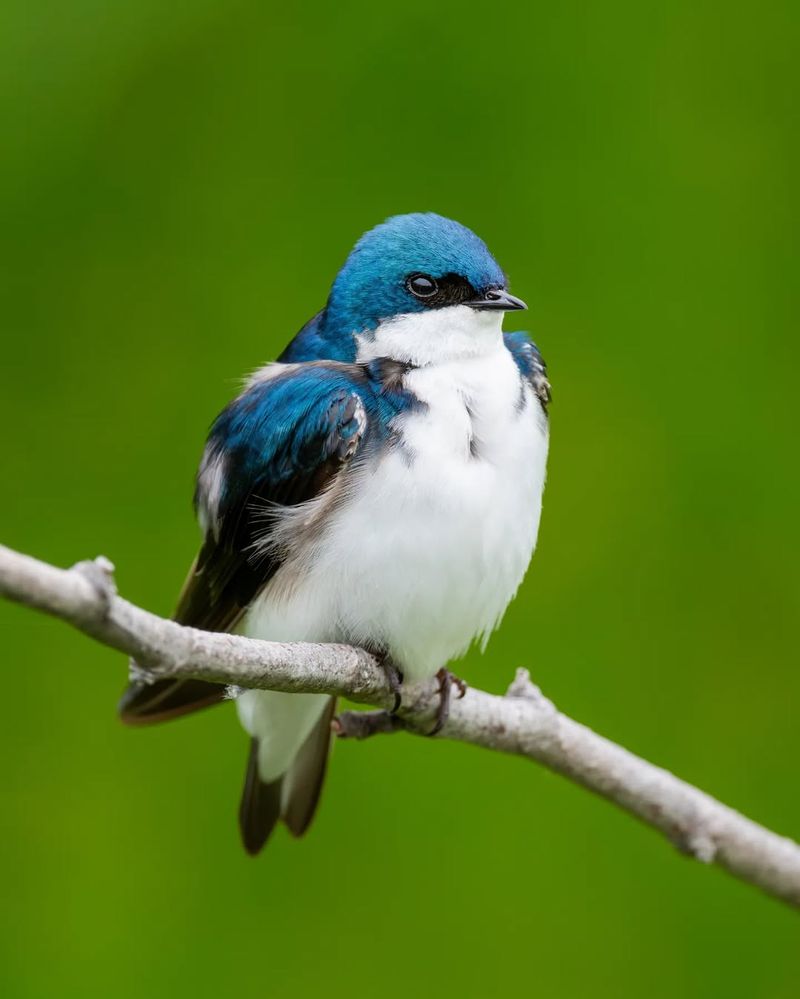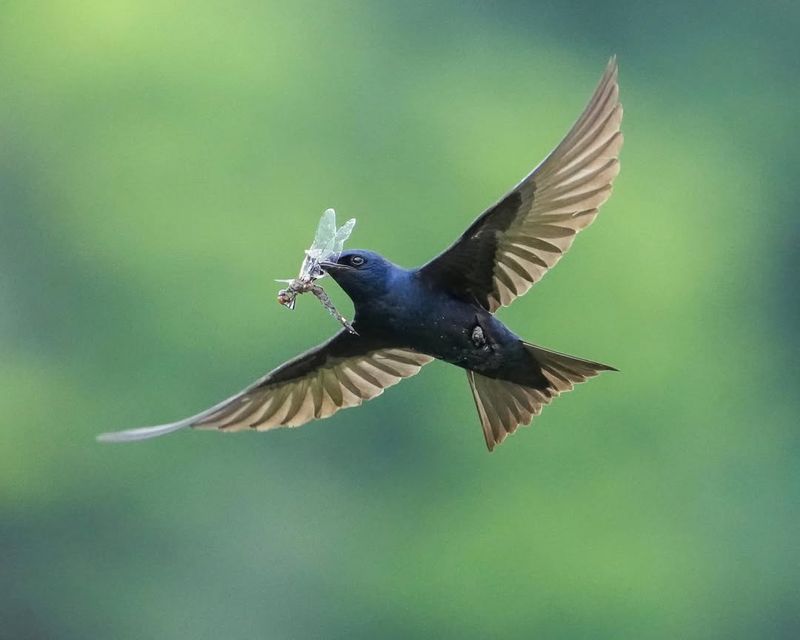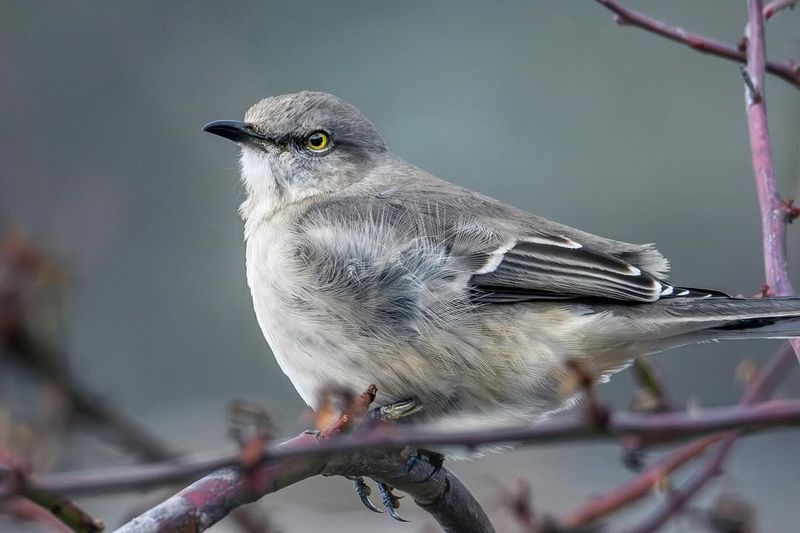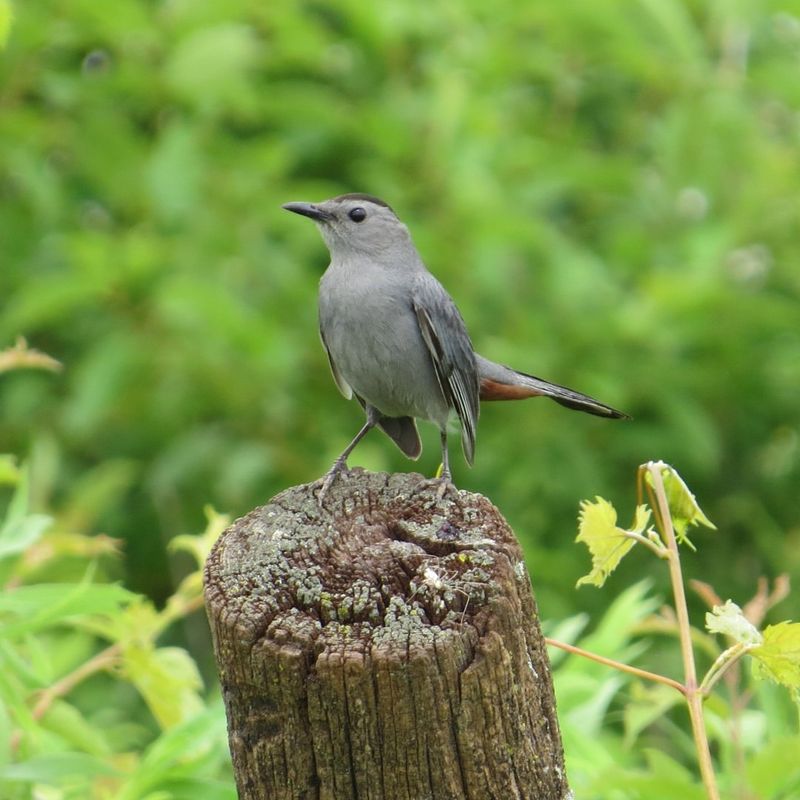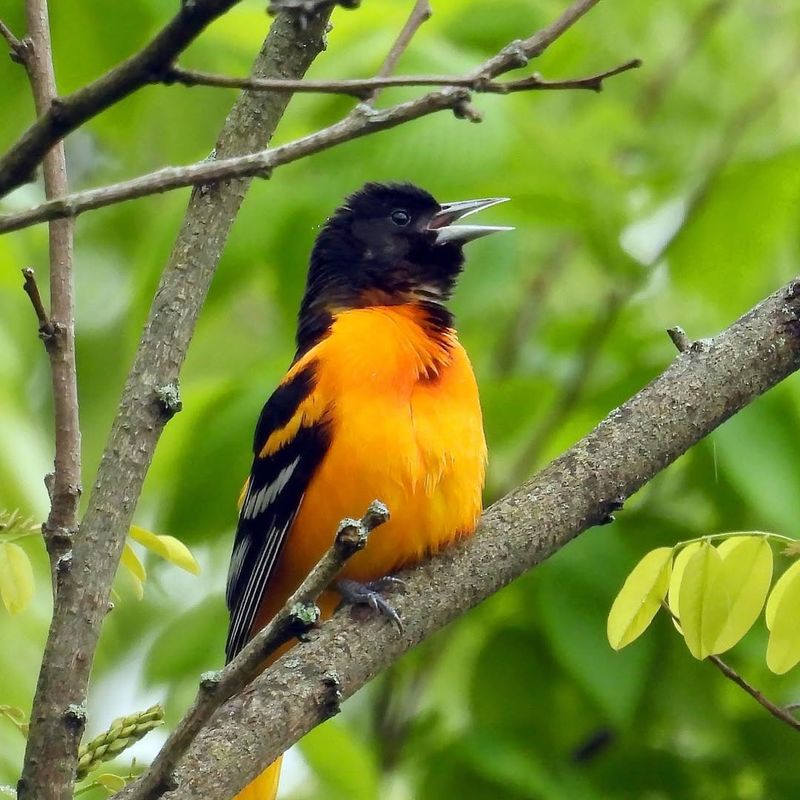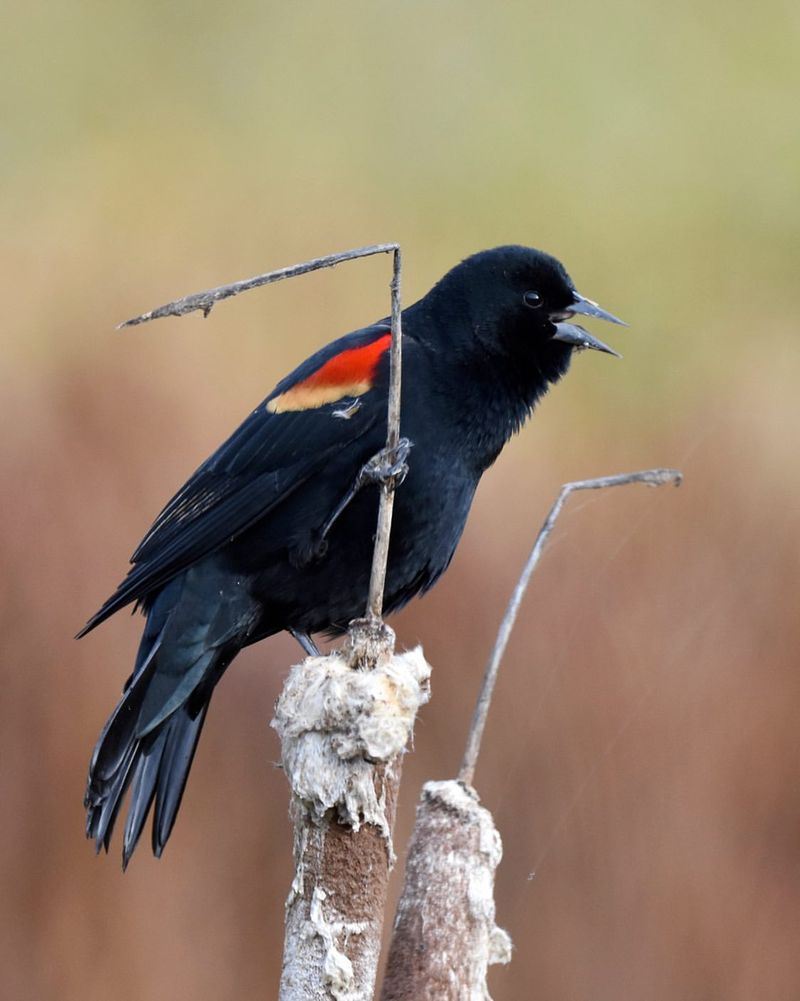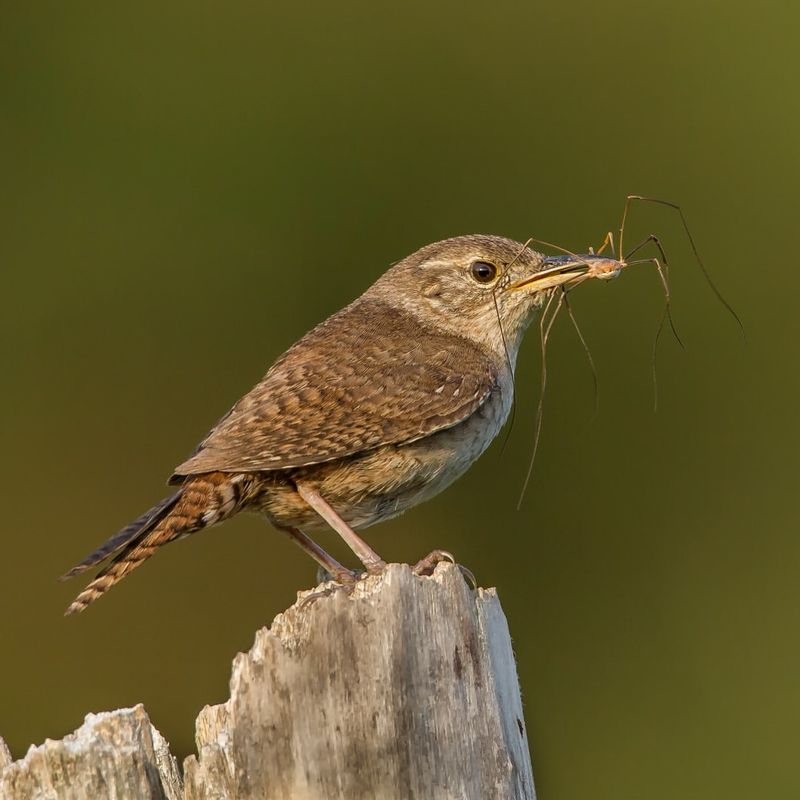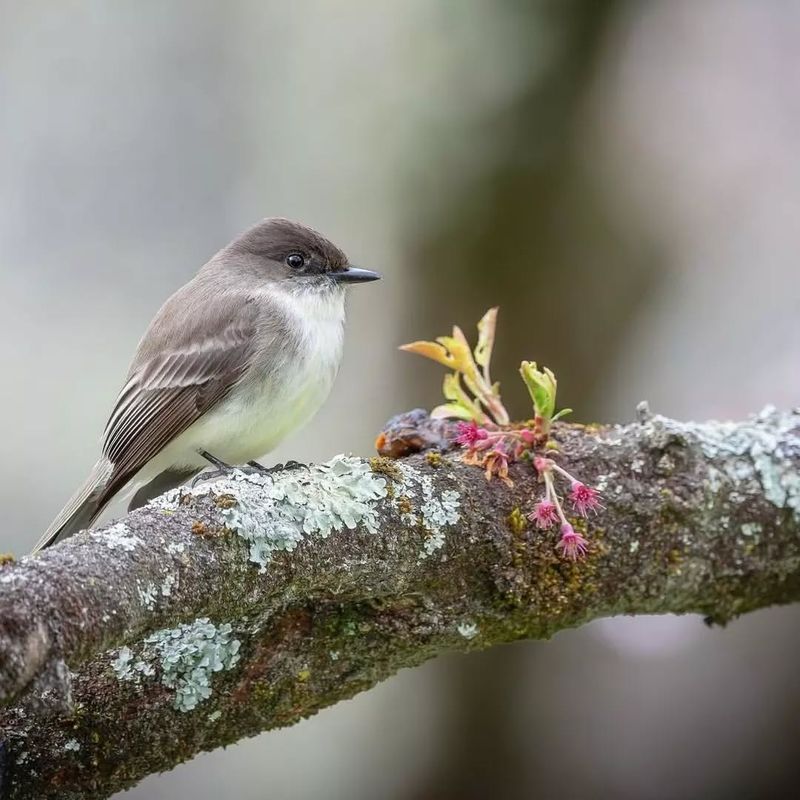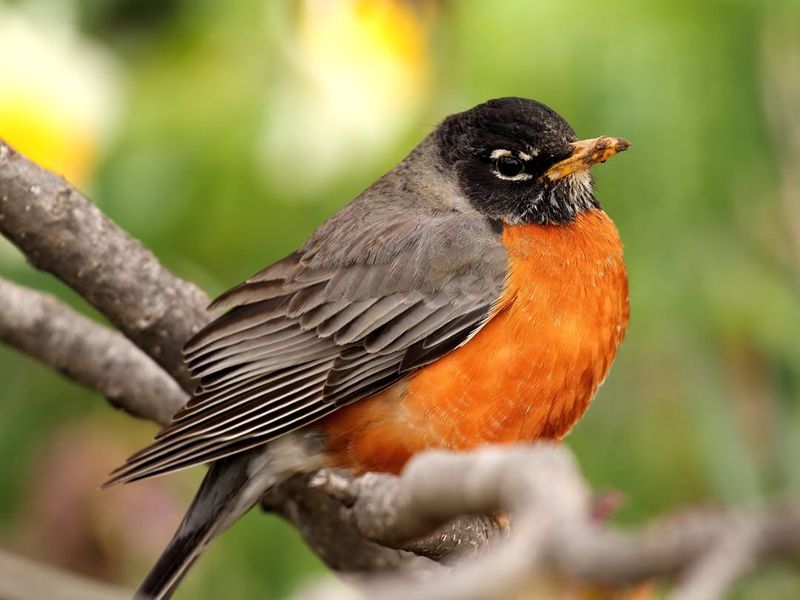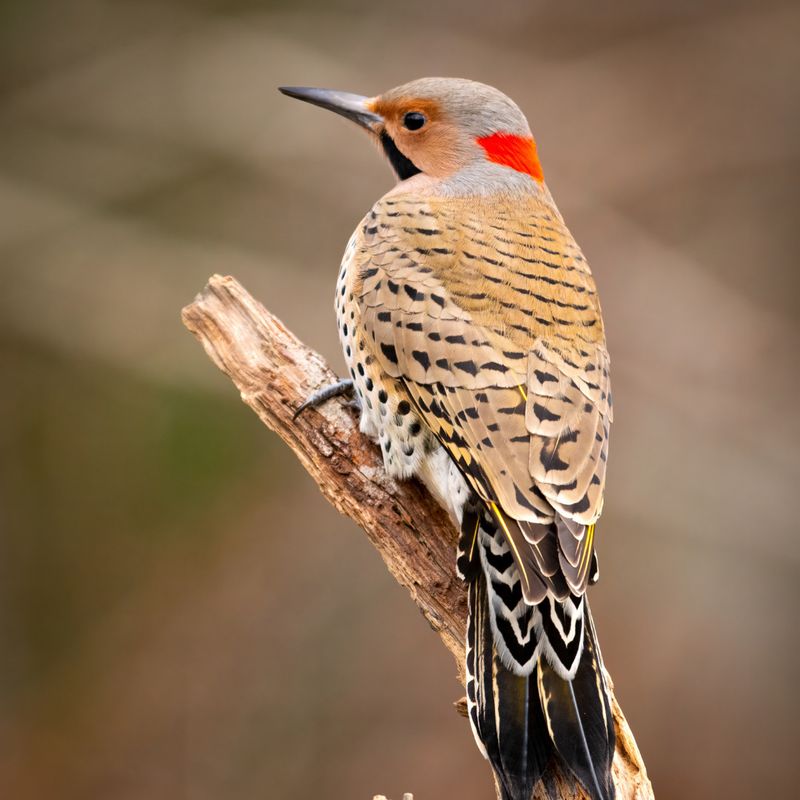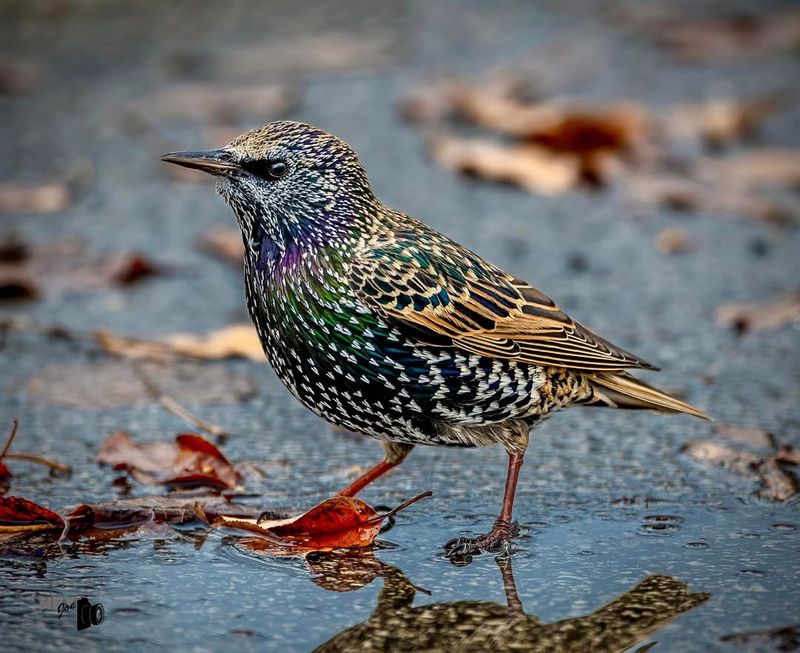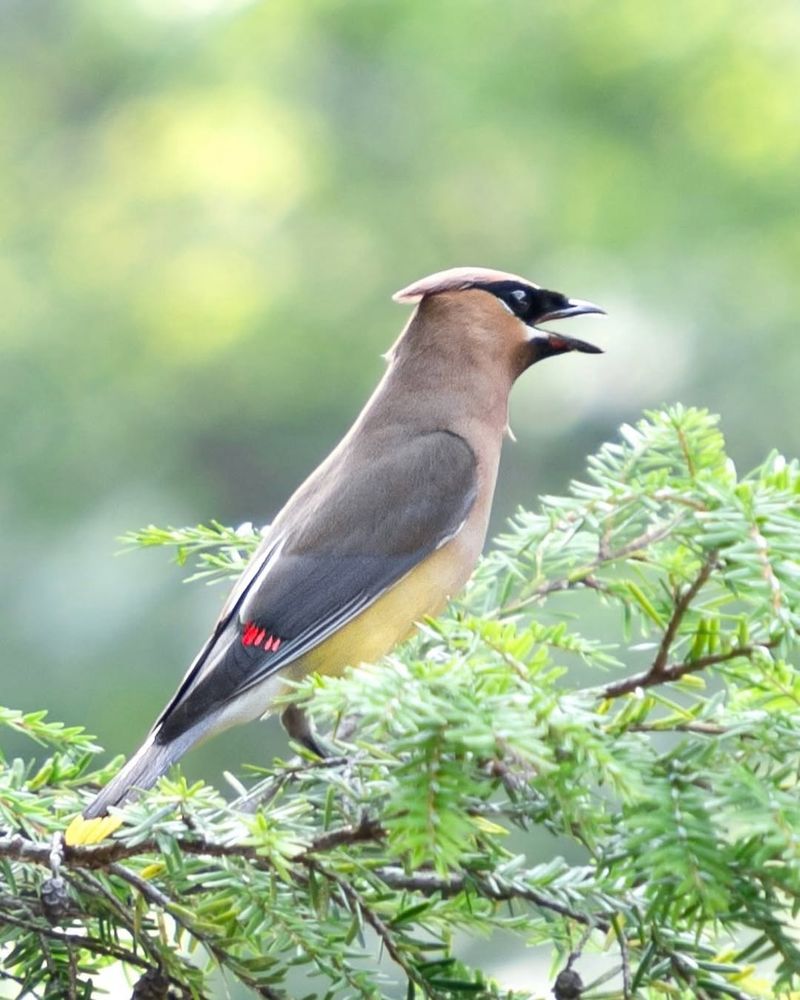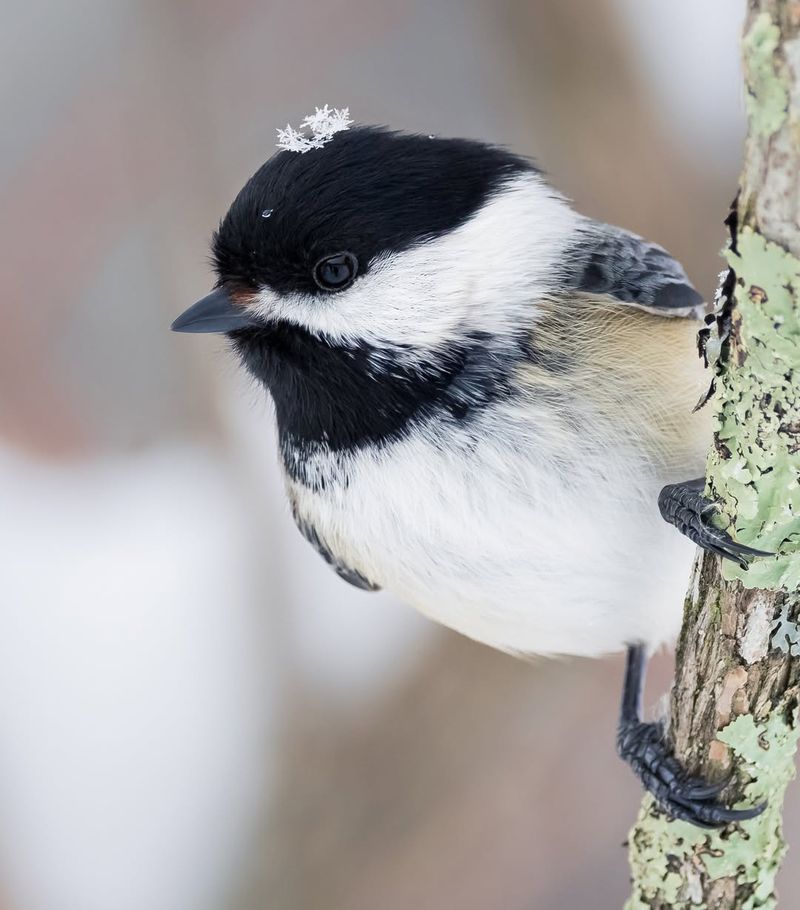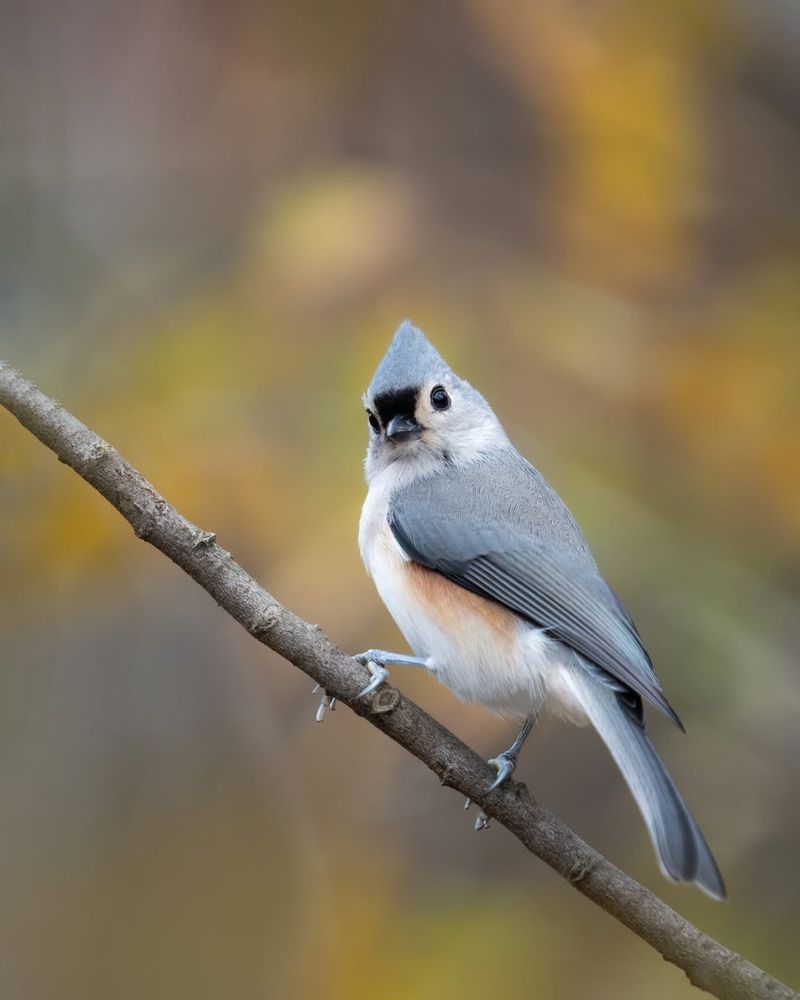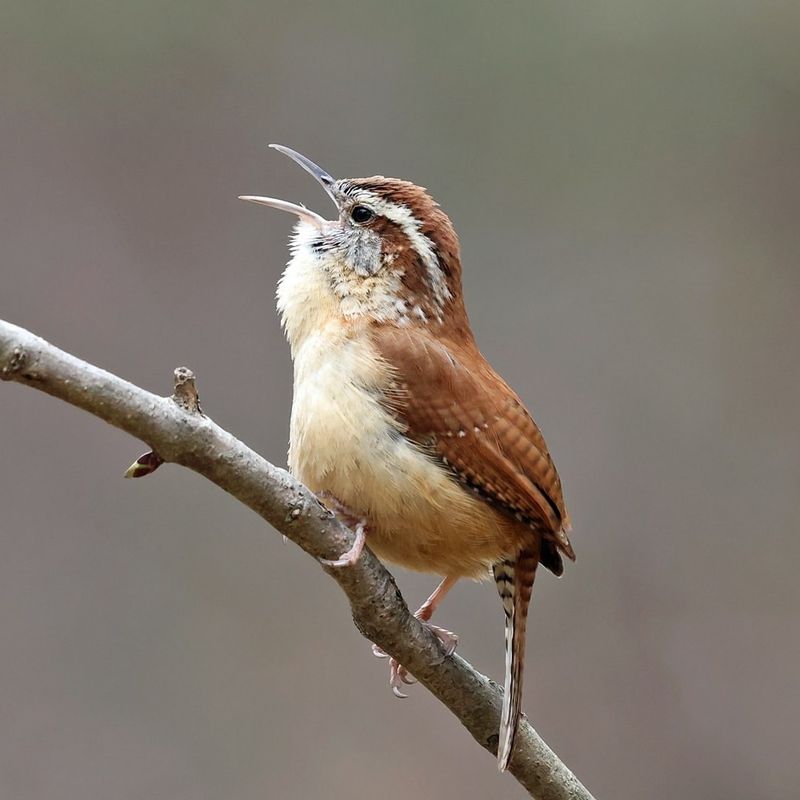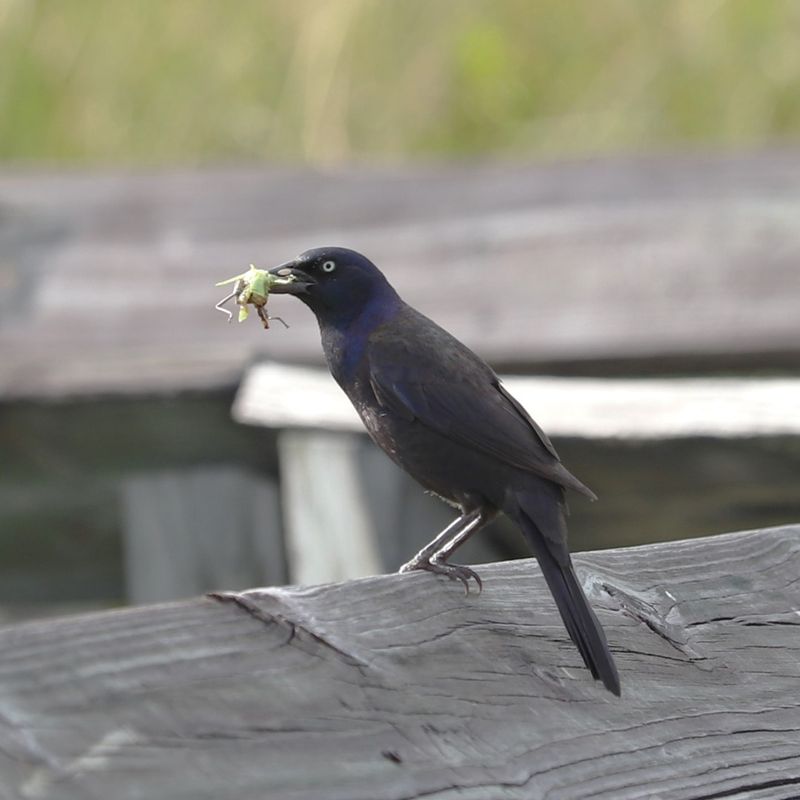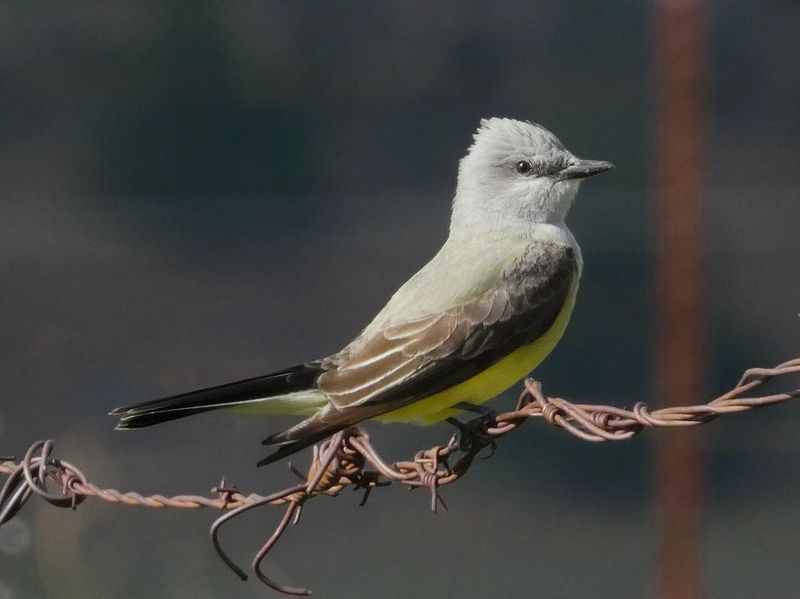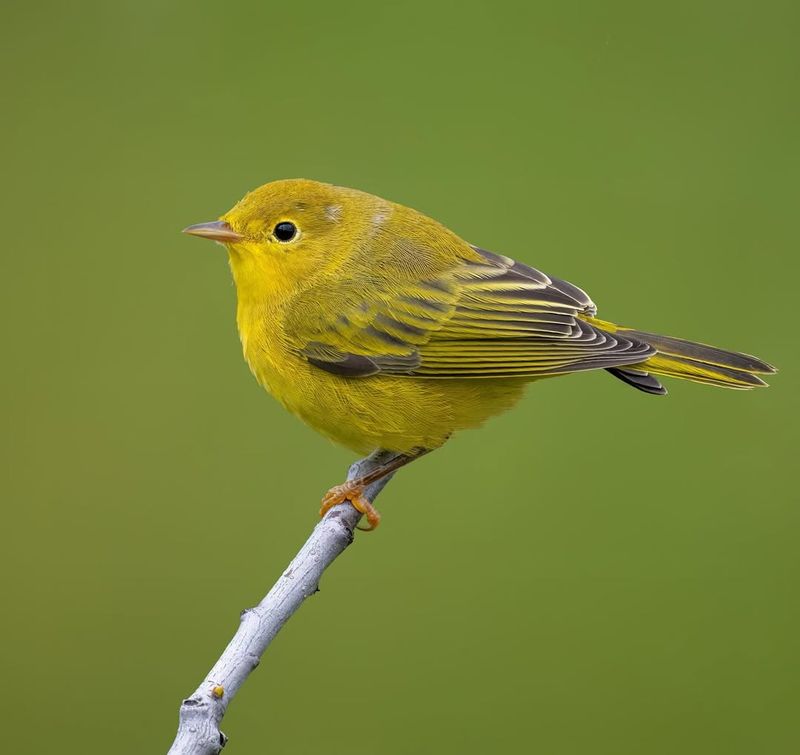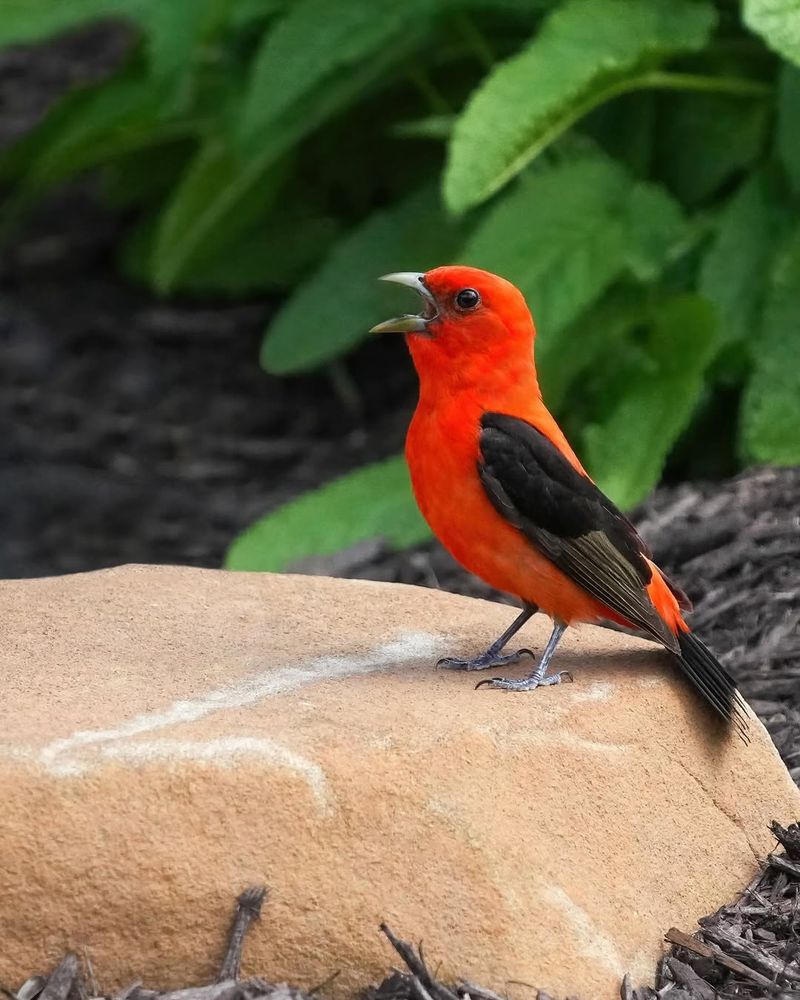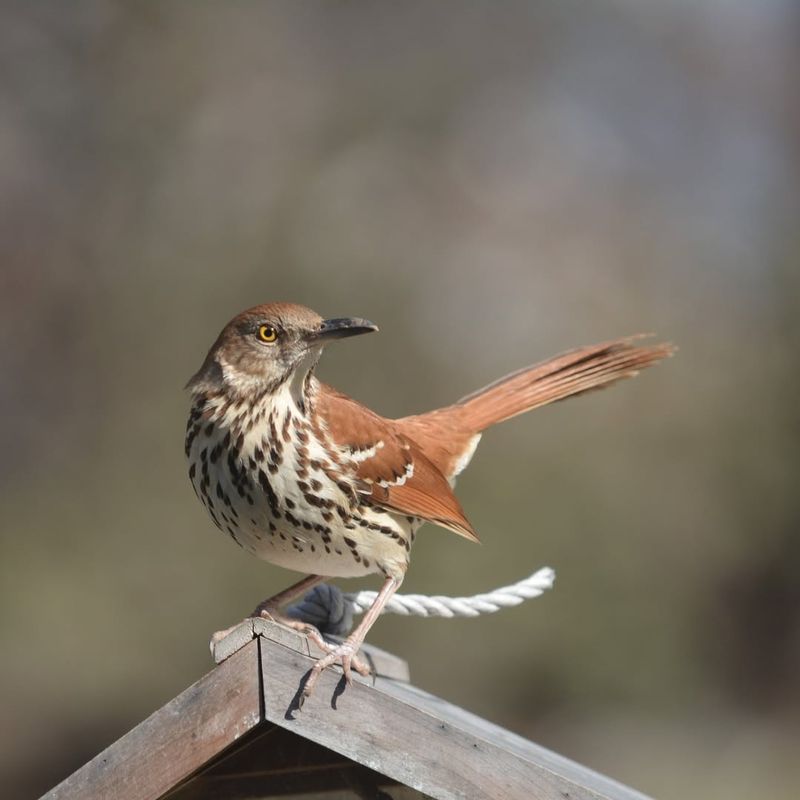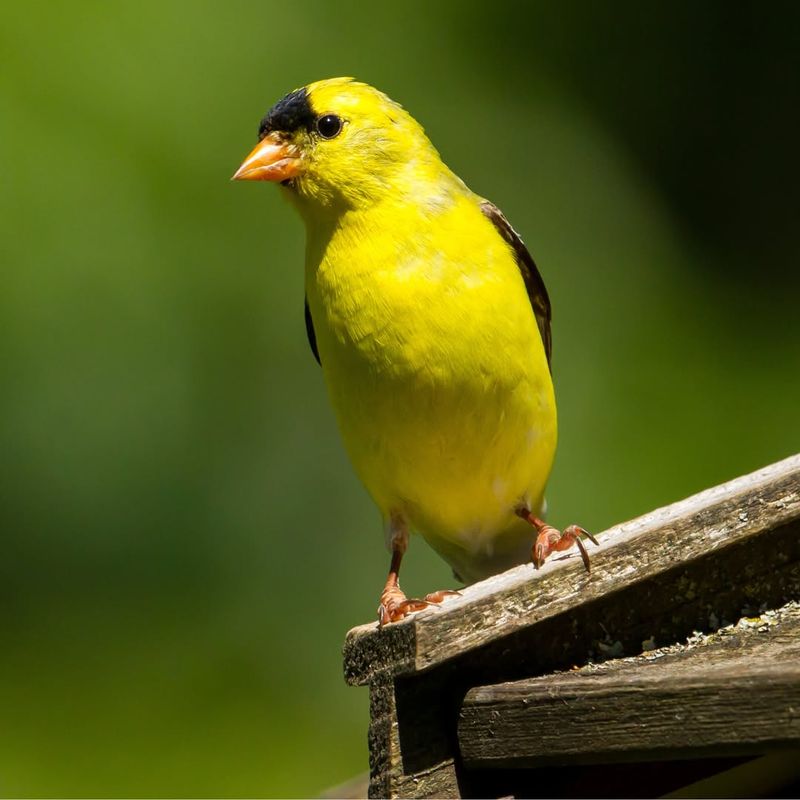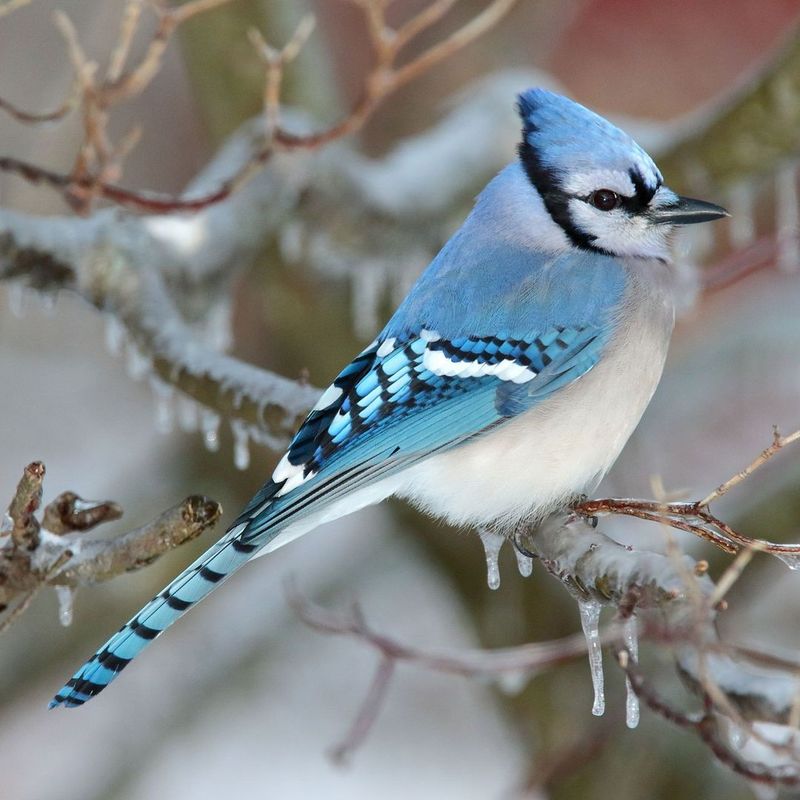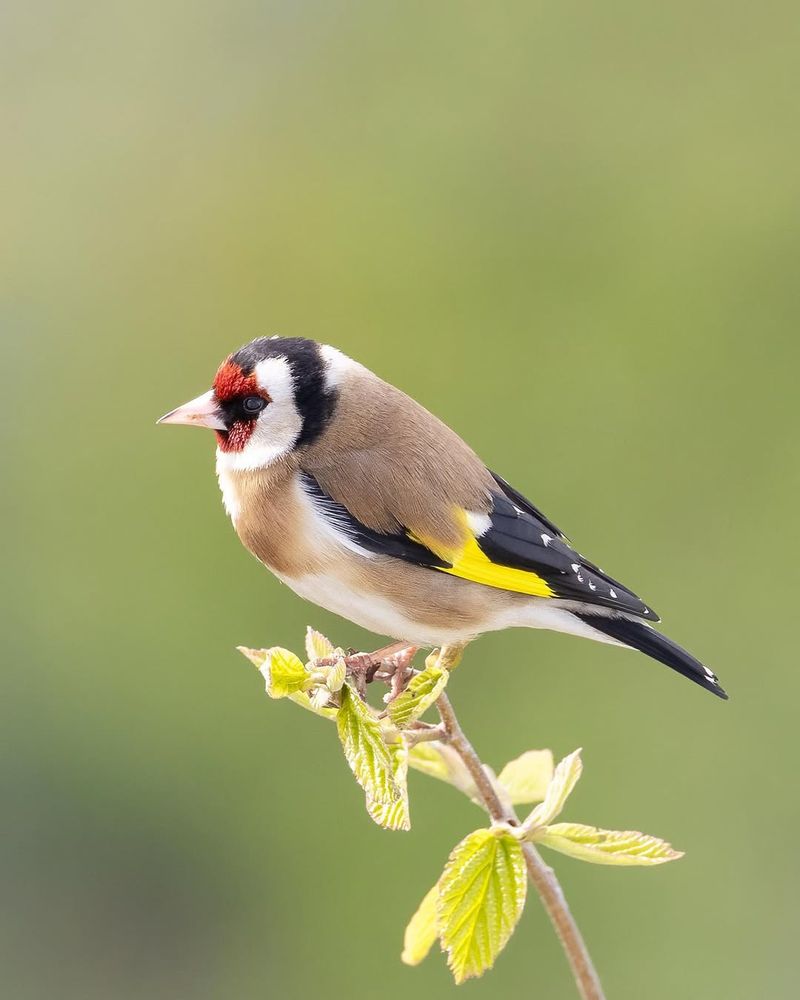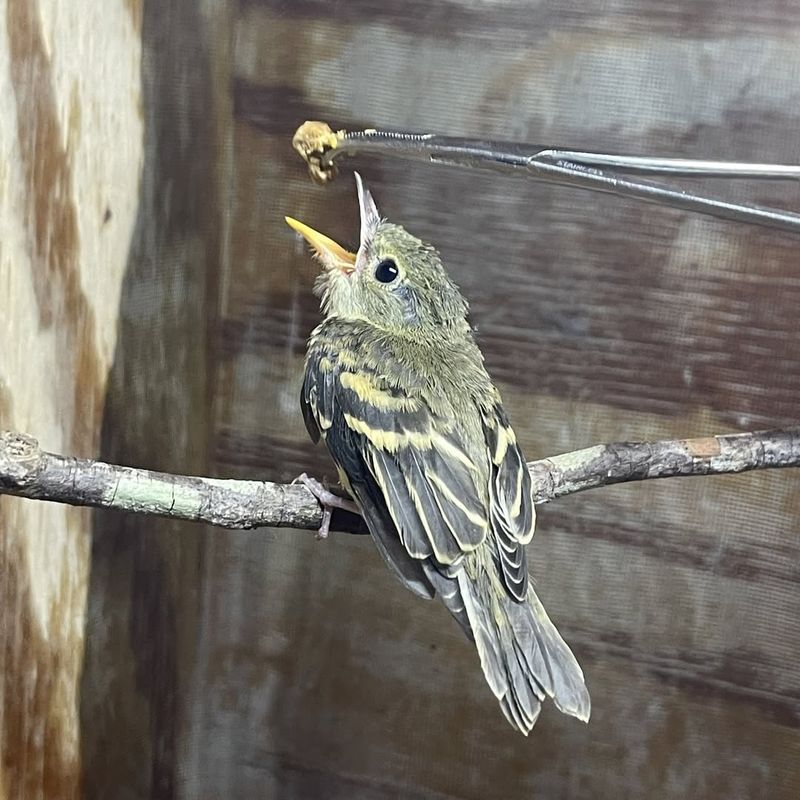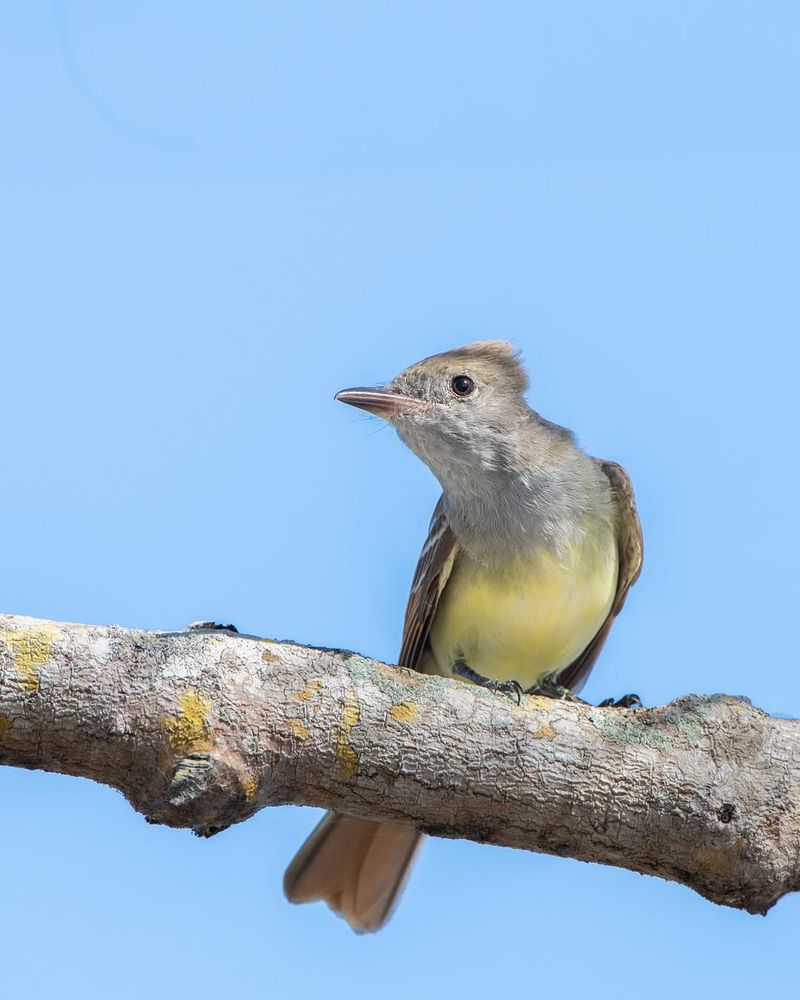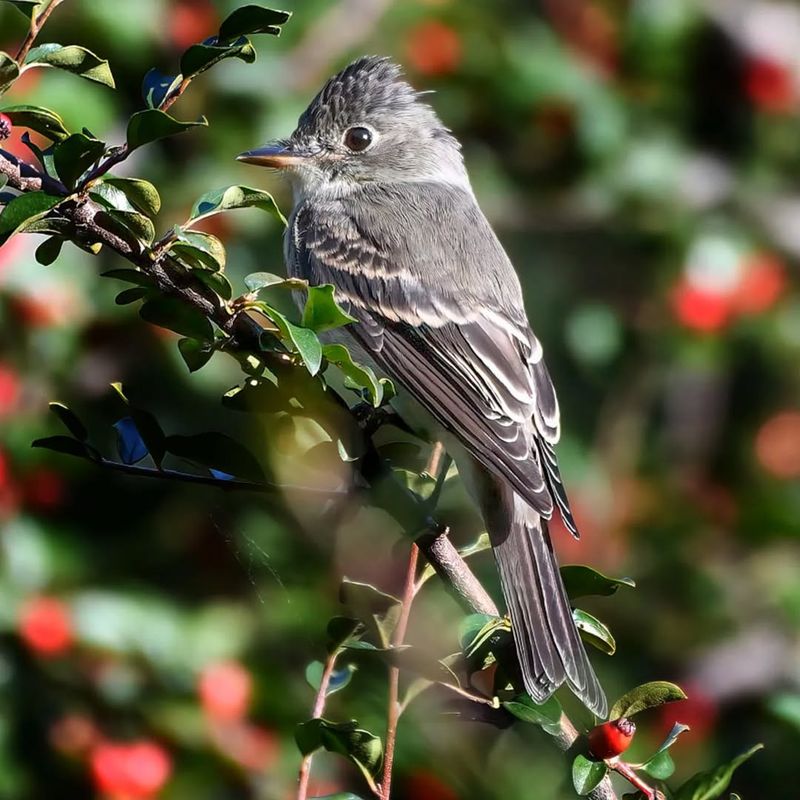Have you ever dreaded the incessant buzzing of wasps in your yard? Attracting the right birds can naturally reduce wasp populations.
This guide introduces thirty amazing birds that serve as natural pest controllers, making your garden a more pleasant place to relax.
1. Eastern Bluebird
Nothing beats the joy of seeing a pair of these beauties flitting around your garden. The Eastern Bluebird, with its rich blue and orange plumage, is a delightful addition to any yard.
Known for their appetite for insects, they readily feast on wasps, reducing their population naturally. By setting up a nesting box, you can easily lure these helpful birds to your garden. Their presence not only aids in pest control but also adds a splash of color to your outdoor space.
2. Barn Swallow
With their sleek bodies and agile flight, these birds are a marvel to watch. Barn Swallows, famous for their forked tails and deep-blue plumage, are natural insect predators.
They swoop gracefully, catching wasps and other flying insects mid-air. To attract these efficient hunters, consider installing a small shelf under your porch for nesting. Their aerial acrobatics provide pest control while offering a fascinating spectacle.
3. Tree Swallow
A blur of blue and white, these birds are a captivating sight. Tree Swallows, with their glossy iridescent feathers, consume vast quantities of insects, including wasps.
They thrive near water sources and open fields where they can dive and catch their prey. Installing nest boxes close to ponds or marshy areas will entice them to stay. Witnessing their swift, darting movements is a delight for bird enthusiasts and gardeners alike.
4. Purple Martin
These social creatures are a joy to host. Purple Martins, the largest of the swallow family, are known for their glossy purple-black feathers and insectivorous habits.
They hunt in impressive flocks, consuming wasps and other pests with ease. Providing a multi-compartment birdhouse is key to attracting these birds, as they prefer communal living. Their graceful aerial displays are a treat, keeping your garden free from pesky insects.
5. Northern Mockingbird
This bird’s song is as varied as its diet. The Northern Mockingbird is a versatile feeder, making it a formidable opponent to wasps.
With a talent for mimicking other birds, its vocal repertoire adds to its charm. To attract these talented singers, plant berry-producing shrubs and trees. Not only will they serenade you with their tunes, but they will also help keep wasp numbers in check.
6. Gray Catbird
A splash of somber elegance characterizes this bird. The Gray Catbird, with its slate-gray plumage and distinctive calls, is a stealthy hunter of insects.
They enjoy thick shrubbery where they can forage for wasps and other pests. Planting dense hedges or wild thickets will make these birds feel right at home. Their secretive nature adds an element of mystery to your garden.
7. Baltimore Oriole
A burst of fiery orange makes this bird hard to miss. The Baltimore Oriole, renowned for its vibrant color and sweet song, is also a voracious insect eater.
They adore fruit-bearing trees, which attract insects such as wasps. By planting native fruiting plants, you can entice these beautiful birds to visit. Their presence adds both visual and auditory delight to your garden.
8. Red-winged Blackbird
With their striking red shoulder patches, these birds are unmistakable. The Red-winged Blackbird is a common sight in marshes and wetlands, where they hunt insects like wasps.
Their melodious call adds charm to any landscape. To draw these birds in, provide access to marshy areas or plant cattails. Their constant activity and vibrant plumage enhance the liveliness of your garden.
9. House Wren
Small in size but mighty in appetite, these birds are a joy to watch. House Wrens, with their energetic nature and bubbly song, are excellent pest controllers.
They consume a variety of insects, including wasps, making them beneficial garden guests. Providing a snug birdhouse will encourage them to stay. Their cheerful presence and diligence keep the garden lively and pest-free.
10. Eastern Phoebe
An understated beauty, this bird is full of charm. The Eastern Phoebe, with its gentle demeanor and subtle colors, plays a crucial role in controlling insect populations.
They prefer nesting on ledges or eaves of buildings, where they can easily hunt wasps and other insects. By offering nesting sites, you can welcome these valuable birds. Their calm presence contributes to a serene garden atmosphere.
11. American Robin
Often associated with the arrival of spring, these birds are prolific insect eaters. The American Robin’s cheerful song and orange breast make it a beloved garden visitor.
While known for their love of worms, they also consume wasps, aiding in pest management. Providing a water source and fruit-bearing shrubs will attract these industrious birds. Their lively antics and melodious tunes bring life to any backyard.
12. Northern Flicker
A flash of golden-yellow reveals this bird’s presence. The Northern Flicker, a member of the woodpecker family, is adept at catching wasps and other insects.
They take advantage of trees and wooden structures to forage for food. By leaving dead trees or logs in your yard, you can attract these effective pest controllers. Their striking appearance and drumming sound are an added bonus.
13. European Starling
Though often considered a nuisance, these birds have their perks. European Starlings are highly social and consume large quantities of insects, including wasps.
Their iridescent plumage adds a touch of shimmer to any flock. To attract them, offer suet or mealworms in your garden. Their synchronized flying displays are mesmerizing, making them fascinating yet functional garden visitors.
14. Cedar Waxwing
With their sleek feathers and masked faces, these birds are as elegant as they are effective. Cedar Waxwings are known for their fondness for fruits and ability to catch insects on the wing.
They often travel in flocks, providing a spectacle as they move through your garden. By planting native berry-producing plants, you can draw these birds in. Their presence ensures a balance between beauty and pest control.
15. Black-capped Chickadee
With their cheerful demeanor, these birds bring joy to any garden. Black-capped Chickadees are small but mighty, consuming a variety of insects, including wasps.
They enjoy mixed forests and perennial gardens where they can forage easily. Planting a diverse range of native plants will attract these delightful birds. Their curious nature and friendly behavior make them a favorite among birdwatchers.
16. Tufted Titmouse
A tuft of gray and white feathers marks the presence of this bird. The Tufted Titmouse, with its expressive eyes and active nature, is a skilled insect hunter.
They frequent deciduous woods and gardens, searching for wasps and other pests. By providing bird feeders filled with sunflower seeds or peanuts, you can entice them to visit. Their lively antics and soft calls add vibrancy to the garden.
17. Carolina Wren
A sprightly singer, this bird fills the garden with its melodies. The Carolina Wren, with its rich brown plumage, is an efficient wasp predator.
They thrive in brushy areas where they can forage for insects. Encouraging dense vegetation and providing nesting boxes can attract these charming birds. Their vibrant song and busy nature make them wonderful garden companions.
18. Common Grackle
These bold birds are hard to miss. Common Grackles, with their glossy black feathers, consume a wide range of insects, including wasps.
They are often seen foraging in open fields and lawns. By offering cracked corn or other grains on a platform feeder, you can allure them to your yard. Their boisterous presence and striking appearance add intrigue to any outdoor space.
19. Western Kingbird
A splash of yellow and gray signals this bird’s arrival. The Western Kingbird is adept at catching flying insects, making it an excellent wasp predator.
They prefer open landscapes where they can easily spot their prey. Providing perches in open areas will attract these skillful birds. Their assertive behavior and striking plumage make them captivating garden visitors.
20. Yellow Warbler
A songbird that brightens any day, this bird is as useful as it is charming. Yellow Warblers, with their brilliant yellow feathers, are constant insect feeders.
They frequent gardens and forest edges where they can catch wasps and other insects. Planting native shrubs and trees will create a hospitable environment for these birds. Their cheerful song and vibrant color make them a delight to watch.
21. Scarlet Tanager
A flash of red and black, this bird is a stunning sight. Scarlet Tanagers, though often elusive, are efficient insect hunters.
They frequent deciduous forests where they hunt for wasps and other pests. To attract them, plant oaks and other native trees. Their striking coloration and melodious song add an exotic flair to any garden.
22. Brown Thrasher
A master of mimicry, this bird is a delightful addition to any woodland. Brown Thrashers have a varied diet that includes wasps and other insects.
They prefer areas with dense brush where they can forage for food. By maintaining thickets and offering leaf litter, you can encourage them to visit. Their vocal abilities and secretive nature make them intriguing garden residents.
23. American Goldfinch
A burst of golden feathers, this bird is a sunshine companion. American Goldfinches, with their bright yellow plumage, are frequent visitors to gardens.
They primarily consume seeds but will also eat insects, including wasps. Planting native thistles and sunflowers will attract these cheerful birds. Their lively presence and melodic song enhance the beauty of any outdoor space.
24. Blue Jay
With their bold personalities, these birds are garden celebrities. Blue Jays, known for their striking blue and white feathers, eat a wide variety of food, including insects like wasps.
They are highly intelligent and can be attracted to your yard with peanuts and suet. Their vibrant appearance and vocal nature make them entertaining and effective garden allies.
25. European Goldfinch
A flash of red, black, and gold signals the presence of this bird. European Goldfinches are known for their striking coloration and melodious song.
While they primarily consume seeds, they also help control insect populations. Incorporating seed-bearing plants in your garden will attract these delightful birds. Their charming song and vibrant colors make them a joyful addition.
26. Acadian Flycatcher
A shy inhabitant of deep woods, this bird is a quiet but effective hunter. Acadian Flycatchers specialize in catching flying insects, including wasps.
They prefer wooded areas where they can remain undisturbed. Preserving forested patches and providing water features can attract these elusive birds. Their subtle presence and insect-eating habits provide natural pest control.
27. Great Crested Flycatcher
A flash of lemon yellow marks this bird’s arrival. Great Crested Flycatchers, with their bold calls and striking appearance, are formidable insect hunters.
They often nest in tree cavities, preying on wasps and other pests. By providing nest boxes in wooded areas, you can attract these vibrant birds. Their lively behavior and colorful plumage add excitement to any garden.
28. Eastern Wood-Pewee
A gentle presence in the treetops, this bird is a patient hunter. Eastern Wood-Pewees are adept at catching insects mid-flight, including wasps.
They prefer forested environments where they can find ample food. Maintaining wooded areas and providing open spaces for foraging will entice these birds. Their soothing calls and efficient hunting make them valuable garden allies.

